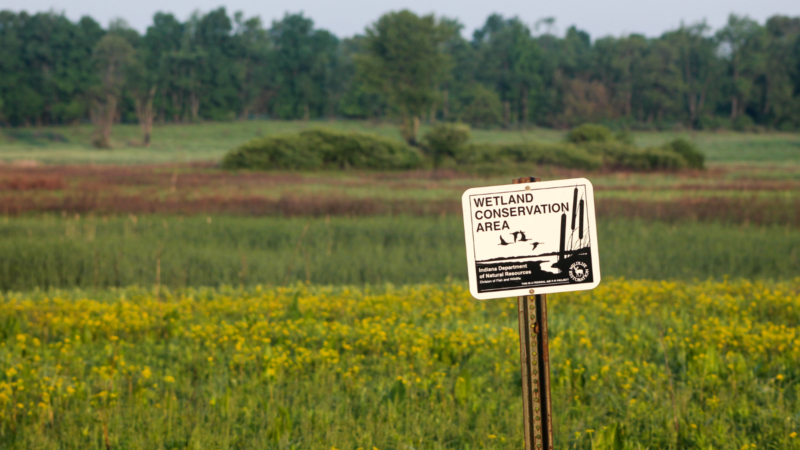
Creating pollinator habitats benefits not only bees, butterflies, and a plethora of other invertebrates but also songbirds and gamebirds.
Thanks to the generosity of the NIPSCO and the NiSource Charitable Foundation and the Northeast Indiana Pheasants Forever Chapter, we are excited to announce our collaboration with the Indiana Department of Natural Resources (DNR) to establish 16 acres of prairie pollinator habitat this year at Cedar Swamp Wetland Conservation Area in Indiana.
Cedar Swamp Wetland Conservation Area is a state-owned and managed property located in Steuben County, Indiana. The 982-acre property offers a wide range of outdoor recreational activities. Visitors frequently have the opportunity to observe wildlife such as deer, waterfowl, turkey, pheasants, and monarchs.
“The Cedar Swamp pollinator habitat project is a perfect example of the type of project we love to support with funding through NIPSCO Environmental Action Grant," said Brian Kortum, NiSource Director of Environmental Permitting. “It aligns perfectly with our biodiversity goals and continuing efforts to build trust for a sustainable energy future.”
The 2015 Indiana State Wildlife Action Plan emphasized the significant loss of prairie habitat as the most substantial decline in Indiana’s ecosystems. This loss is already affecting many grassland bird populations. The decline of pollinating insects and the plants they depend on is a growing concern. Pollinators play a crucial role, not only in supporting wildlife, but also in sustaining human populations’ health.
“Cedar Swamp is a unique property that provides benefits to grassland-dependent species and offers numerous wildlife-based public use opportunities,” stated Savanna Vaughn, Property Manager at Indiana DNR. “Thanks to support from partners like MJV, we can establish high-quality habitat on the ground, ensuring species thrive and opportunities persist. I’m excited to see what the future holds for this property.”
The monarch butterfly faces significant challenges that have raised concerns about the continued viability of its long-distance migration. These challenges have caused such declines in the population that the species is currently under consideration for protection under the U.S. Endangered Species Act. Factors such as habitat loss, indiscriminate use of chemicals, and a changing climate have all contributed to the decline of migratory monarchs.
Monarch and pollinator habitats, with their diverse array of native plants and flowering species, play an important role as brood cover for both grassland songbirds and gamebirds. These grassland birds are among the most threatened species on the planet, and these habitats provide an abundance of essential resources, including insects, seeds, and shelter, which are vital for their survival and successful reproduction. The interconnectedness of these ecosystems underscores the crucial importance of conserving and restoring monarch and pollinator habitats, not only for their primary beneficiaries but also for the broader biodiversity they support.
"Our group unanimously supported the project. Pollinator habitat also serves as excellent cover for young pheasant and quail chicks in their early stages of life. Our group is dedicated to establishing good habitats,” said Thom Maher, Secretary of the Northeast Indiana Pheasants Forever Chapter. “When Rob Seilheimer of the MJV approached us about the project and partnering with NIPSCO on the grant, we were more than willing to contribute.” Northeast Indiana Pheasants Forever Chapter 182 was recognized as one of the top 24 Pheasants Forever chapters, having invested over $50,000 in habitat restoration in 2022.
The Indiana Department of Natural Resources (DNR) will begin site preparation using a comprehensive approach that includes mowing, controlled burning, and targeted herbicide application. The Northeast Indiana Pheasants Forever chapter plans to utilize a no-till grass drill for planting species mixes during the dormant season in late fall or early winter. The Monarch Joint Venture will play a key role in this habitat project by providing technical guidance on pollinators, supplying the seed mix, offering marketing and communications support, and facilitating future community science projects with the DNR, such as monarch tagging events.
"The pollinator habitat project at Cedar Swamp exemplifies how we can integrate all of MJV's pillars to incorporate not only high-quality habitat but also partnerships, education, and science," said Jake Koenig, MJV Habitat Coordinator.
Diverse partnerships make projects like this possible! Learn more about the partners participating in this project via their website links below:
